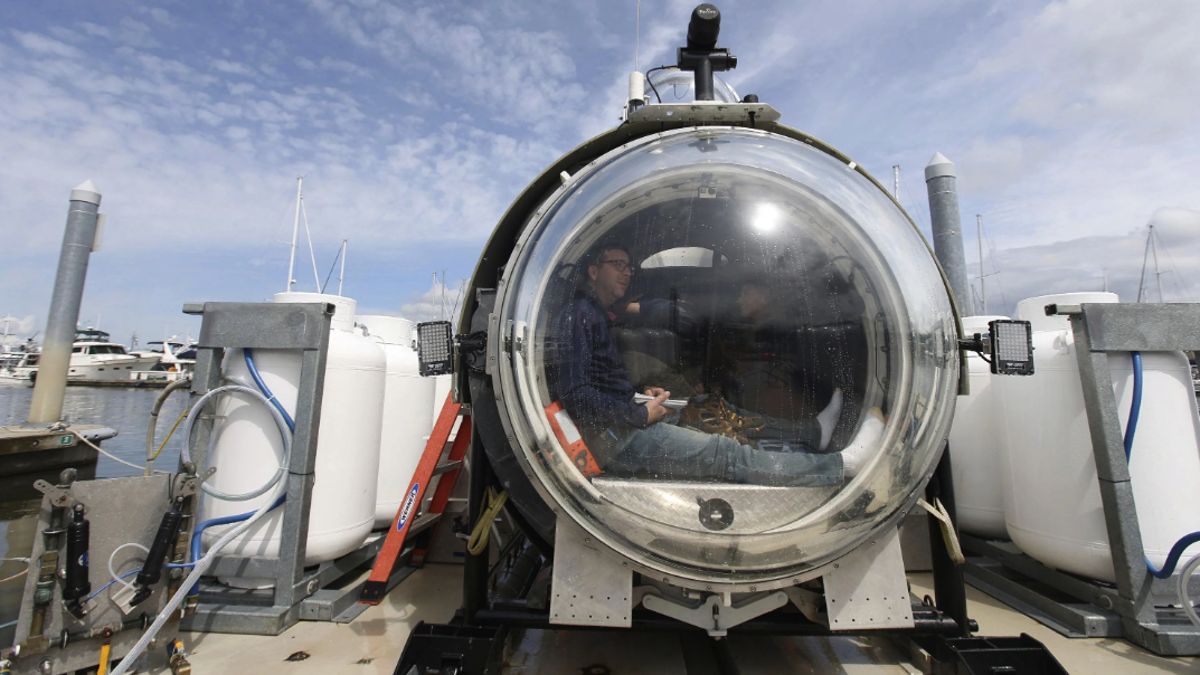OceanGate Fired an Employee After He Expressed Safety Concerns
Investigators are currently racing against time in order to find the Titan, a small commercial submarine that went missing in the North Atlantic on Sunday with five people aboard. Now, new reporting reveals that the company behind the ill-fated underwater tour previously fired an employee after he expressed concern over the safety of the missing vehicle’s design.
OceanGate Expeditions, which charters insanely expensive aquatic trips like the one that went awry this weekend, was previously the subject of a lawsuit involving its former director of marine operations. The exec in question, David Lochridge, lost his job at the company in January of 2018 after he delivered a “scathing” report to the company’s senior management that highlighted numerous safety concerns with its business model, TechCrunch reports.
Advertisement
The legal tussle started in 2018 after Lochridge was fired, after which OceanGate sued him and accused him of leaking confidential corporate information about its submarine. Lochridge then filed a compulsory counterclaim, alleging wrongful termination for having been a whistleblower.
Lochridge accused the company’s top brass of ignoring his repeated efforts to draw attention to problems with Titan’s design; he felt those problems could eventually “pose a safety risk to personnel” and paying passengers. Concerns started soon after Lochridge was instructed to conduct a quality inspection of the vehicle which revealed “numerous issues that posed serious safety concerns,” according to the lawsuit.
Advertisement Advertisement
One of the issues was Titan’s hull—which was made of what was then a first-of-its-kind carbon fiber structure. TechCrunch writes that the material OceanGate used to craft its ship was appealing because it “can be stronger and lighter than steel.” However, the material could also be “be prone to sudden failure under stress,” the outlet notes—and Lochridge worried that small flaws in the hull could hypothetically expand under the pressure of diving into the depths of the ocean. Lochridge suggested that the company conduct “critical, non-destructive testing of the experimental design of the hull,” but was repeatedly met with protestations from the company’s management, according to the lawsuit.
Another issue of contention was the submarine’s viewport—that is, the front window out of which passengers can see the ocean. According to Lochridge’s allegations, he was repeatedly “denied” information by other members of the team about the submarine’s viewport. Eventually, Lochridge attended a meeting where he was given full information about the viewport, and it did not go well...
At the meeting Lochridge discovered why he had been denied access to the viewport information from the Engineering department—the viewport at the forward of the submersible was only built to a certified pressure of 1,300 meters, although OceanGate intended to take passengers down to depths of 4,000 meters. Lochridge learned that the viewport manufacturer would only certify to a depth of 1,300 meters due to experimental design of the viewport supplied by OceanGate, which was out of the Pressure Vessels for Human Occupancy (“PVHO”) standards. OceanGate refused to pay for the manufacturer to build a viewport that would meet the required depth of 4,000 meters.
Advertisement
In other words, according to the lawsuit, the Titan’s viewport really wasn’t built for the depths at which the vehicle was traveling. Indeed, the sub was in the midst of a dive to the site of the Titanic wreckage on Sunday when it disappeared—which is said to be some 13,000 feet below the surface of the ocean.
Lochridge’s lawsuit did not proceed particularly far and the former employee and the company swiftly settled.
Advertisement
Some five years later, however, it’s hard not to see the lawsuit as prescient , given that the Titan is now the subject of a frantic sea-spanning manhunt. At the point when the company lost contact with the submersible, it was projected that the vehicle had approximately four days worth of air left. Now, things are markedly more dire. As of Tuesday morning, officials said there was less than 40 hours left before oxygen supply runs out.
Onboard the lost vehicle are OceanGate’s own CEO, Stockton Rush, who was piloting the sub when it disappeared, as well as Paul-Henry Nargeolet, a former French Navy officer, Hamish Harding, a British billionaire, and Shahzada Dawood (also a billionaire), along with Dawood’s 19-year-old son, Suleman.
Source: Gizmodo


